Reviews
‘Desert X’ Explores the Lure of the Wilderness With Stunning Art Installations
See what Richard Prince, Doug Aitken, and Rob Pruitt got up to in the desert.
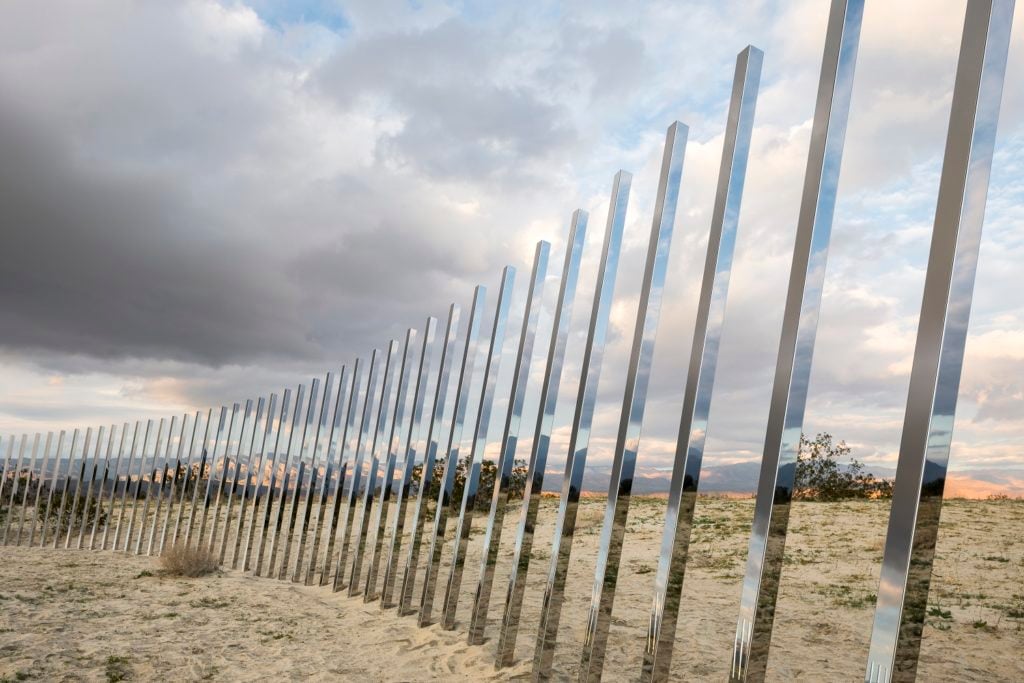
See what Richard Prince, Doug Aitken, and Rob Pruitt got up to in the desert.

“Desert X,” an exhibition for which 16 participating artists have created site-specific works, calls us into the desert, a space typically perceived as a locus of artistic inspiration.
Spread throughout the Coachella Valley—which alongside trendy Coachella also encompasses the rich retirees’ playground of Palm Springs and the more modest neighbor of Desert Springs—the show covers a vast geographical area of 45 miles, and within it, a huge social range, including a large Mexican and Central American community, veterans, and a sizeable LGBTQ population.
Originally started as the Desert Biennial, organizers decided to change the name to Desert Exhibition of Art—”Desert X” for short—freeing them from committing to repeating the show every two years (although the next installment is planned to take place in two years’ time.)
The participating artists in this inaugural edition are Doug Aitken, Lita Albuquerque, Jennifer Bolande, Will Boone, Claudia Comte, Jeffrey Gibson, Sherin Guirguis, Norma Jeane, Glenn Kaino, Gabriel Kuri, Armando Lerma, Richard Prince, Rob Pruitt, Julião Sarmento, Phillip K. Smith III, and Tavares Strachan.
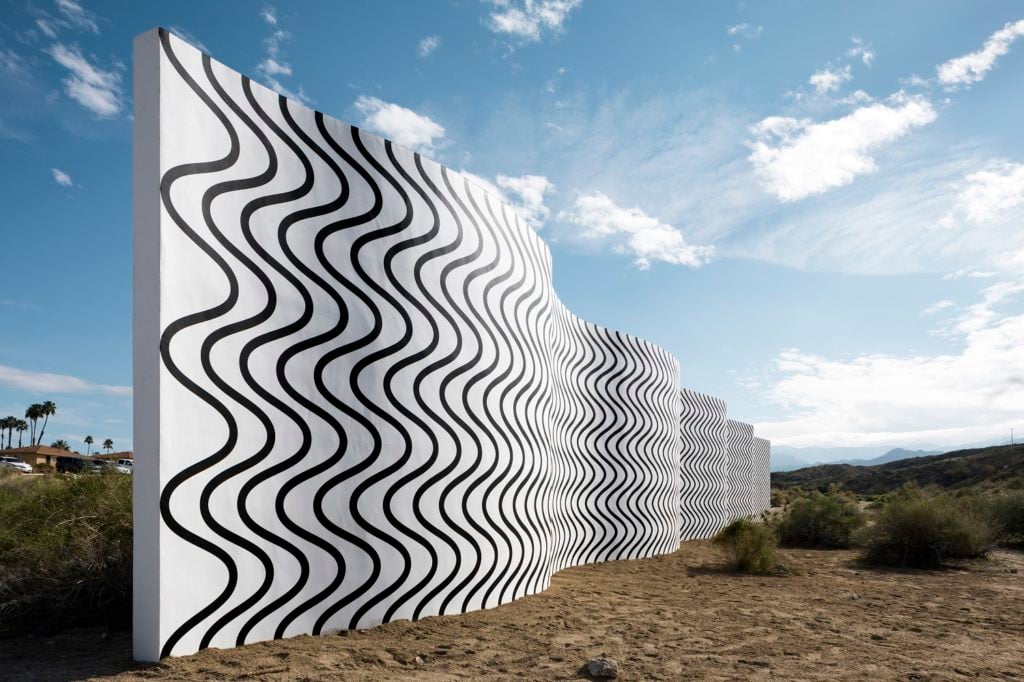
Claudia Comte, Curves and Zig Zags. Photo Lance Gerber, courtesy Desert X.
Artistic director Neville Wakefield worked with the artists in the landscape, allowing them to pick the area which they felt they could work with.
“It doesn’t have a curatorial direction,” Wakefield told artnet News ahead of the preview. ”It’s more about the place acting as curator. We did tons of site visits with artists just exploring the area until they figured out what resonated with them and then we worked with the artist to amplify each piece and materialize it. They are all such different experiences, the one thing that I am most proud of with this show is the diversity of the experiences that are offered.”
The first stop on our road trip around the exhibition—where almost every work is a drive away from another—was Sherin Guirguis’s One I Call (2016), which was one of the furthest-flung works, situated in the Whitewater Preserve, which was bought by conservationists and made accessible to the public.
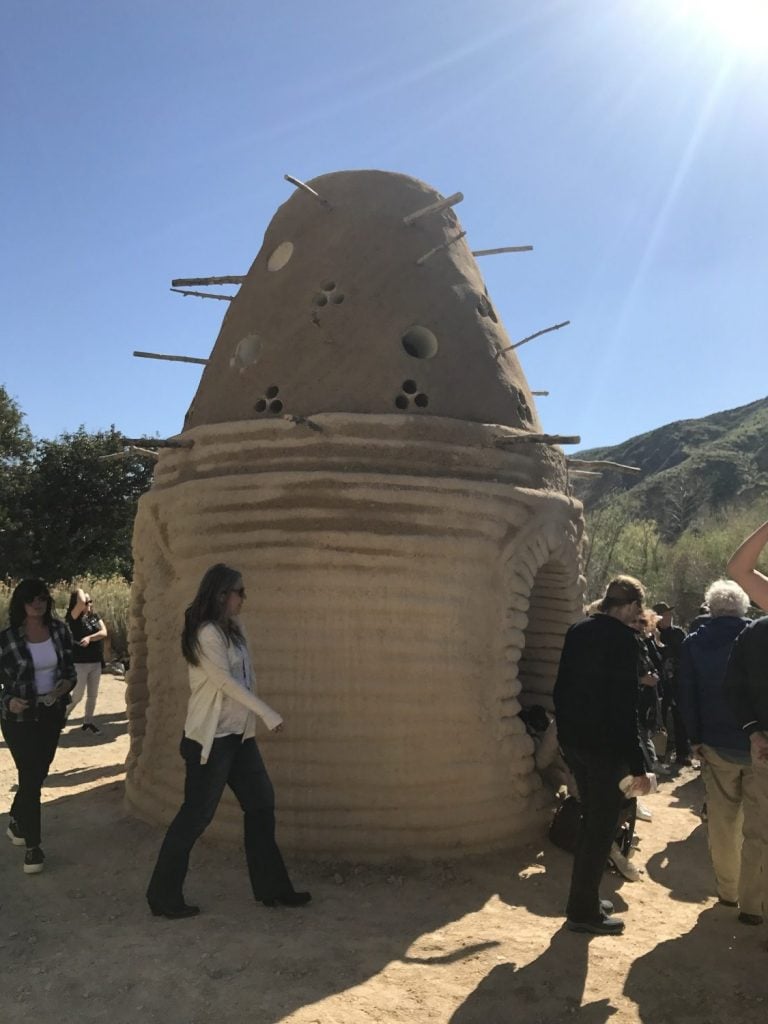
Sherin Guirguis ONe I Call . Lance Gerber Courtesy Desert X
Approaching this work, after following the GPS co-ordinates off the highway, the mountainous landscape evolves as viewers drive through up to the Whitewater River, in the San Gorgonio Wilderness.
Guirguis tapped into her own upbringing in the touristic desert city of Luxor in Egypt, creating an Egyptian pigeon house, or dovecote, in the amazing landscape of the Preserve.
“It’s just so rich, full of life, and interesting people that you don’t see when you’re zipping through the freeway popping out to your resort hotel,” Guirguis told artnet News. “I really feel like I grew while making this project and I really understand this particular desert in a new way.”
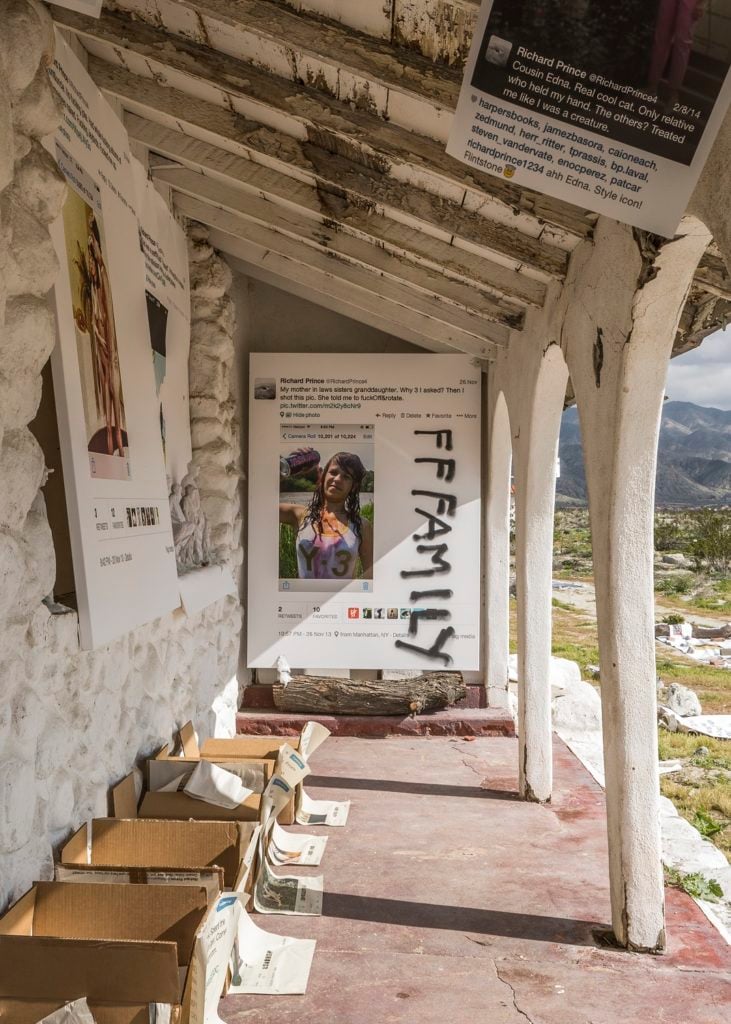
Richard Prince, Third Place. Photo Lance Gerber, courtesy Desert X.
Driving back to Desert Springs—a small town near Palm Springs with a mainly immigrant and native population—we find Richard Prince’s Third Place (2016), which follows First House in Los Angeles in 1993 and Second House which was installed in Rensselaerville, New York, in 2007.
The deserted property sits back from the highway, the exit barely visible from the road. Approaching the derelict house one is greeted by torn print outs of Prince’s Instagram works blowing across the landscape.
Around the smashed-up out building, daubed with the word “Family,” are the sexually suggestive and appropriated, Instagram-based works by Prince, along with small sculptures by him scattered throughout the installation.
On entering the property, one is confronted with an empty and frightening space, with most of the works plastered onto the buildings, at the mercy of the elements. This installation is now closed due to thefts of artworks, according to the “Desert X” website.
We then headed to see the work of Palm Springs native Phillip K. Smith III, whose studio is in Palm Desert. Smith has created a large land work which exists in dialogue with the desert landscape, maximizing the changing light and sky, as they evolve throughout the day. The experience of the work, thus, changes by the hour.
Both this work, as well as the large-scale Op Art installation by Claudia Comte, explore the impact of the desert landscape in flat open space.
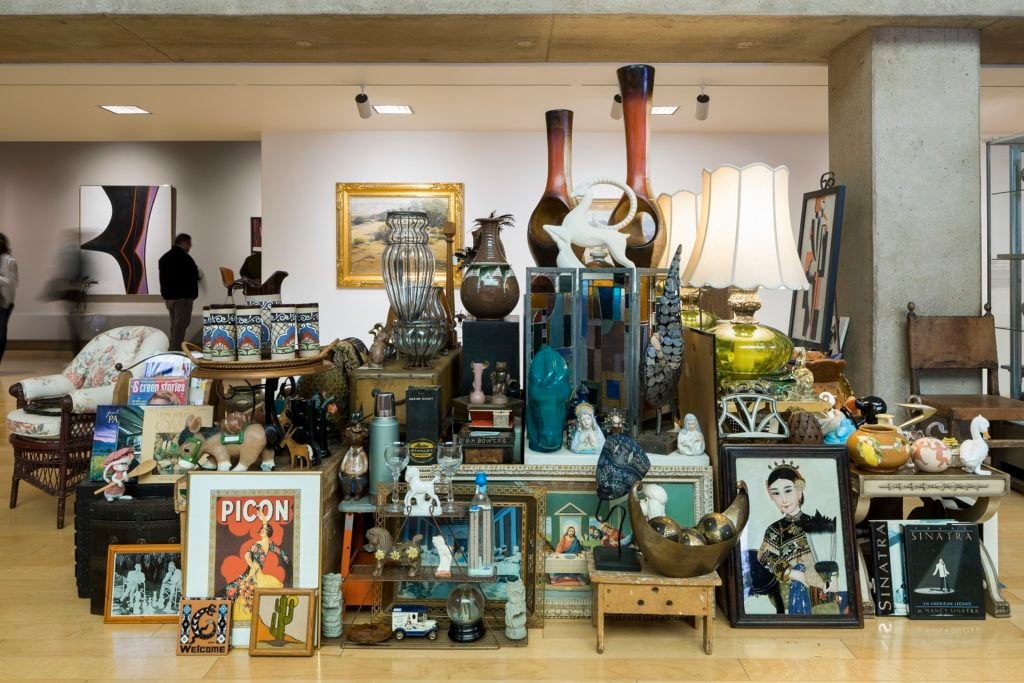
Rob Pruitt, Flea Market (2017). Photo Lance Gerber, courtesy Desert X.
The locations of the works, which were selected by the artists, vary from the wilderness used by Guirguis to more urban settings, such as Palm Springs Art Museum and Coachella itself.
Installed in the free entry Palm Springs Art Museum is Rob Pruitt’s Flea Market, who has tapped into the vintage and antiques tradition in Pioneer Town, Joshua Tree, and Palm Springs, bringing together local experts to show their wares alongside the fine art at the museum.
Not only was the act of browsing therapeutic after a day of driving, but there is something fun and humorous about looking at these disparate objects found in the desert alongside the large-scale land art and installations.
Heading down the highway to Coachella Valley near Los Angeles, on the road to the Joshua Tree National Park, is an experience in itself, as the city limits peter out and are replaced by forests of wind turbines, tumbleweed, saloon bars, casinos, and modernist housing developments.
Here you are at once surrounded by both the traditional and the cutting edge, the local and the foreign, and this exhibition, although a challenge to view in its entirety, is a more than fair representation of these dichotomies.
The first edition of “Desert X” is on view at the Coachella Valley, California, February 25–April 30, 2017.